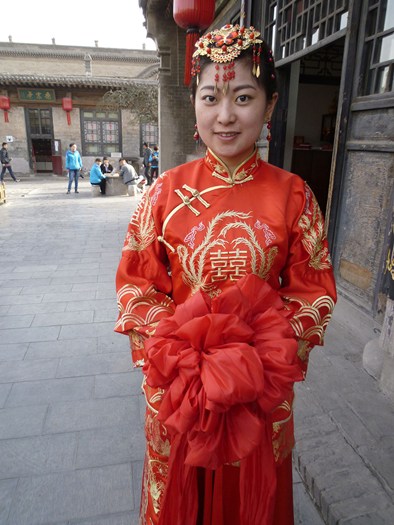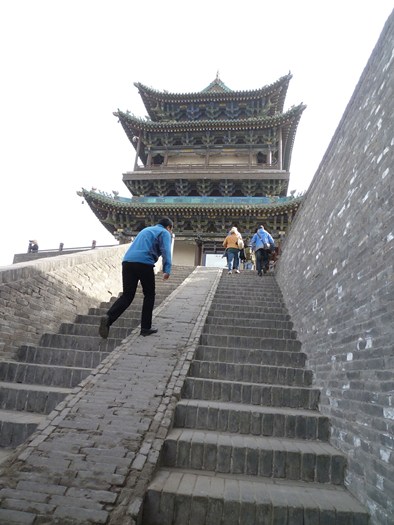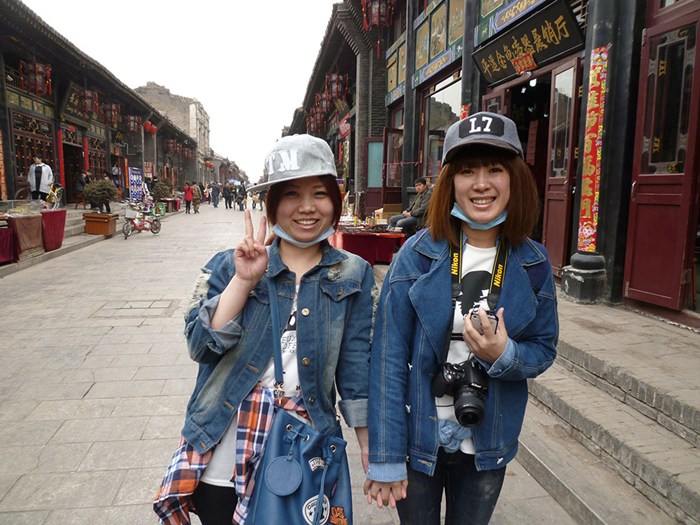JIA BOA, CHINA - Getting lost in an ancient walled village is okay, especially if you’re lost in one of China’s best preserved private residences, once owned by a bean curd baron back in the Qing Dynasty.
China has lots of walled cities and enclaves fit for emperors — and industrialists — who built fortresses to keep their fortunes in and the bad guys out.
The Great Wall, of course, is the granddaddy of them all, but China has many other walled villages worth visiting, such as Qiao Jia Boa Village, in the heart of Shanxi province.
When I arrived in Qiao Jia Boa, with its lumbering stone wall, I knew I had seen it before somewhere. With red lanterns hanging off every gable, by doors and in courtyards, the setting became synonymous with the critically acclaimed movie, Raise the Red Lantern.
“The director, Zhang Yimou, the Steven Spielberg of China, liked the traditional Qing style architecture that was used in Northern China,” says my guide Michael Wang Guan Zhong.
Who wouldn’t? It was built as a private residence for the Qiao family, whose history went from rags to riches. The family’s story begins with Qiao Guifa, who couldn’t bear the poverty around Shanxi, so he went to seek his fortune in Inner Mongolia. He opened a successful retail shop, where he specialized in selling bean curd and camels. His son also showed great business acumen and success soon followed.
Fourth generation descendant, Qiao Zhiyong, went into banking and set up branches across the country.
But the Chinese have a law of nature they call “fall from power.” During the sixth generation, Qiao Ying Xia managed their affairs badly, government banks were introduced and Japan invaded China so his power and wealth vanished. In China, there’s a saying: “One family cannot be rich for more than three generations.” The Qiao family managed it for five.
The entire walled family compound is built like the double Chinese character “xi,” meaning double happiness or good luck. Built in 1756 during the Qing Dynasty, the former residence is now a museum with 313 rooms, six large courtyards and 20 smaller ones.
The complex is a maze of courtyards, alleys, rooms and more courtyards. You almost need to roll out some thread to keep yourself from getting lost.
“This family spared no effort for good food and a good house,” says Michael, pointing to an exquisite wooden carved privacy screen embellished with nine jade dragons in a lavish room.
As we turn a corner, we see a wedding party having their photos taken in the garden. “Many couples come here to take pictures,” says Michael.
Members of the wedding party even ask me to pose for pictures between the bride and groom, who are decked out in period costumes from, yes, Raise the Red Lantern.



Above: Old and new china come together in historic Qiao Jia Boa Village.
Another of China’s famed walled towns is Pingyao, about 30 kilometres south of Qiao Jia Boa Village. A UNESCO World Heritage Site since 1997, ancient Pingyao, dating back to the 14th century, has no cars or trucks (it’s accessible only by rickshaw and bicycle), so it seems lost in time.
Once hailed as “The Wall Street of China,” Pingyao was the country’s first financial capital. Visitors can stay at a traditional guesthouse, the Yide Hotel, which was the former residence of a wealthy banker. Its charming atmosphere features Chinoiserie-styled rooms facing courtyards festooned with lanterns, stone sculptures and wood latticework.
Pingyao’s symbol is a 12-metre wall with six fortified gates and 72 enormous bastions. An ancient legend says the nearly six-kilometre cube-shaped structure embodies a turtle shape (in China, the turtle symbolizes longevity). Sightseers can climb the South Gate (which is the turtle’s head) for a panoramic view.
South Street offers a melange of traditional shops selling antiques and exquisite black lacquerware, for which Pingyao is famous. Among the shops, craftsmen fashion grooming accessories such as combs and shaving brushes, or fine handmade paper cut-outs.
The Rishengchang Exchange Shop is the site of China’s first private bank. The bank’s founder, Lei Lutai, was originally a casino worker, who was hired as a business adviser by the owner of a local dye house. They became so successful, they were able to open China’s first private bank in 1823. Visitors can tour one of the bank’s most unusual features, an opium den for prospective clients.
“After the clients smoked up, they signed on the dotted line — a good trick,” says Michael with a laugh.
Outside, as cyclists weave past wobbling infants, I can’t help but notice the latest bright street fashion set in stark contrast to the old grey stone facades. There’s a lively youthful energy in these ancient, labyrinthine streets.
So if you do get lost in one of China’s walled cities, don’t worry. There’s bound to be a friendly face ready to help. It might even be someone from a wedding party.
Information
Tour East Holidays offers many valued priced tours to China which include return airfare, hotels, meals and much more. Go to
www.toureast.com to find out more. / Air Canada, Hainan Airlines and China Eastern Airlines all offer direct flights to China from Toronto.
About the Author
Ilona Kauremszky is an award-winning journalist and a syndicated travel columnist. She has penned pieces for leading publishers in North America, the U.K. and Southeast Asia. She also makes appearances on TV and radio. Co-producer of mycompass.ca, Ilona is forever finding great stories in the strangest places.